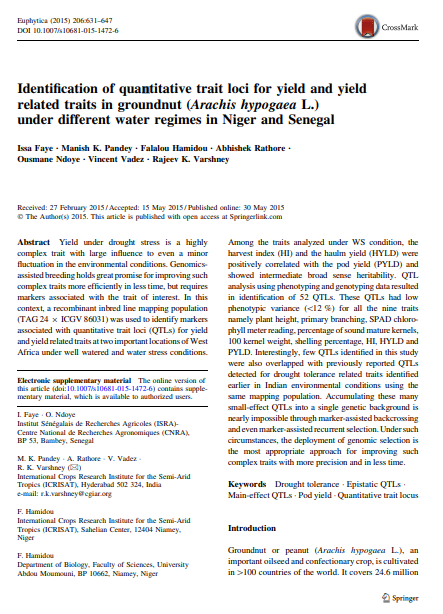Identification of quantitative trait loci for yield and yield related traits of groundnut (Arachis hypogaea L.) under different water regimes in Niger and Senegal
Summary
Yield under drought stress is a highly complex trait with large responses to even a minor fluctuation in environmental conditions. Genomics-assisted breeding holds great promise for improving such complex traits more efficiently. However, this requires markers associated with the trait of interest. In this context, a recombinant inbred line mapping population (TAG 24 × ICGV 86031) was used to identify markers associated with quantitative trait loci (QTLs) for yield and yield related traits at two important locations in West Africa under well-watered and water stress (WS) conditions. Among the traits analyzed under WS conditions, the harvest index (HI) and the haulm yield (HYLD) were positively correlated with the pod yield (PYLD) and showed intermediate broad sense heritability. QTL analysis using phenotyping and genotyping data resulted in identification of 52 QTLs. These QTLs had low phenotypic variance (<12 %) for all the nine traits, namely plant height, primary branching, SPAD chlorophyll meter reading, percentage of sound mature kernels, 100 kernel weight, shelling percentage, HI, HYLD, and PYLD. Interestingly, few QTLs identified in this study overlapped with previously reported QTLs detected for drought tolerance related traits identified earlier in Indian environmental conditions using the same mapping population. Accumulating these many small-effect QTLs into a single genetic background is nearly impossible through marker-assisted backcrossing or even marker-assisted recurrent selection. Under such circumstances, the deployment of genomic selection is the most appropriate approach for improving such complex traits with more precision in less time.
Open resource Download resource Access resource on external site

